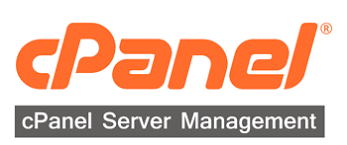
Introduction :
cPanel, an industry-leading web hosting control panel, has revolutionized the way websites are managed and maintained. With its user-friendly interface and powerful features, cPanel simplifies complex server administration tasks, empowering website owners and administrators to take control of their online presence. In this blog post, we will delve into the inner workings of cPanel and explore its key functionalities and benefits.
Understanding cPanel’s Architecture
At its core, cPanel is a web-based control panel that provides a graphical interface for managing various aspects of web hosting. It is typically installed on a server and accessed through a web browser. cPanel utilizes a client-server architecture, where the cPanel software acts as the server, and users interact with it through the client-side interface.

How cPanel Works ?
cPanel works as a web-based control panel that simplifies server administration tasks for website owners and administrators. It utilizes a client-server architecture, where the cPanel software acts as the server, and users interact with it through a web browser on the client side. Let’s explore how cPanel works in more detail:
- Installation and Access:
- Hosting providers typically install cPanel on their servers during the server setup process.
- Once installed, users can access cPanel by entering the designated URL in their web browser. This URL is provided by the hosting provider and usually includes the server’s IP address or domain name followed by the cPanel port number (e.g., http://yourdomain.com:2083).
- User Authentication:
- Upon accessing cPanel, users are prompted to enter their login credentials, including a username and password.
- Additionally, some hosting providers may offer two-factor authentication for added security, requiring users to provide a verification code from their mobile devices.
- cPanel Interface:
- After successful authentication, users are presented with the cPanel interface, which consists of various icons, menus, and sections organized in a user-friendly manner.
- The interface may vary slightly depending on the hosting provider, but the core functionality remains consistent across installations.

Navigation and Sections :
- The cPanel interface provides easy navigation through different sections, each representing a specific aspect of server and website management.
- Common sections include Domains, Email, Files, Databases, Security, Software, Metrics, and more.
- Users can click on the corresponding icons or menu items to access specific features and settings within each section.
- Feature and Functionality:
- cPanel offers a wide range of features and functionality to manage websites and servers efficiently.
- Users can create and manage email accounts, set up domains and subdomains, manage files and directories using the built-in file manager, install content management systems (CMS) like WordPress or Joomla, and manage databases.
- Other features include managing SSL certificates, configuring security settings, setting up FTP accounts, scheduling backups, and more.
- Integration and Customization:
- cPanel supports integration with various third-party applications, plugins, and extensions to extend its functionality.
- Users can install additional software, such as e-commerce platforms, analytics tools, and content delivery networks (CDNs), to enhance their websites.
- cPanel also allows customization of the interface, including branding options, theme selection, and layout modifications.
- Documentation and Support:
- cPanel provides comprehensive documentation, including user guides, video tutorials, and a knowledge base, to assist users in understanding and utilizing its features effectively.
- Additionally, hosting providers often offer support services to help users with cPanel-related questions and issues.

Benefits of cPanel
- User-Friendly Interface: cPanel’s intuitive interface makes server administration accessible to users with varying levels of technical expertise. Its graphical representation of complex tasks simplifies management, reducing the learning curve and saving time.
- Automation and Efficiency: cPanel automates several administrative tasks, eliminating the need for manual intervention. Features like automated backups, email filtering, and software installation streamline operations and improve efficiency.
- Wide Compatibility: cPanel is compatible with various operating systems and can be installed on both Linux and Windows servers. This flexibility allows users to choose their preferred hosting environment while still benefiting from cPanel’s rich feature set.
- Extensibility and Customization: cPanel supports a vast ecosystem of third-party plugins and extensions, enabling users to extend its functionality. From e-commerce platforms to analytics tools, users can integrate additional services seamlessly.
Conclusion :
cPanel has revolutionized web hosting management, providing website owners and administrators with a comprehensive set of tools to simplify server administration. Its user-friendly interface, robust feature set, and wide compatibility make it a popular choice among hosting providers and website owners worldwide. By utilizing cPanel, users can streamline their website management processes, enhance security, and maximize efficiency, ultimately enabling them to focus on their core objectives and deliver an exceptional online experience.
Remember, while this blog post provides a high-level overview of cPanel’s functionality, exploring the official cPanel documentation and seeking professional advice will further enhance your understanding of this powerful tool.
Happy cPanel management!
Visit now :
https://www.dedicatedsupport.com/ & https://www.24x7technicalsupport.net/